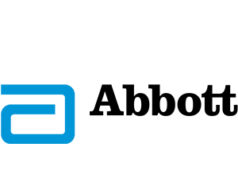
Abbott has released a second round of insights from its Beyond Intervention global research programme, digging into the experience of patients, physicians and healthcare providers in the diagnosis and treatment of cardiovascular disease. Speaking to Cardiovascular News Abbott’s chief medical officer and divisional vice president of medical affairs, Nick West, said that the research will shape the company’s direction of travel “to really drive meaningful improvements in patient care”.
The Beyond Intervention initiative gathered feedback from more than 1,800 patients with cardiovascular disease, physicians and healthcare leaders. The research highlights some potential areas for integration of technology into the healthcare pathway, including potential for greater use of artificial intelligence (AI) and digital health tools to aid diagnosis. Patient feedback also pointed to frustration in a lack of compatibility with electronic medical records, with the report noting that this may also create inefficiencies and barriers for early and accurate diagnosis of coronary artery disease (CAD) and peripheral arterial disease (PAD).
“What we heard from year one is that the biggest barriers, and where tech had the greatest impact, was upstream of the cath lab,” West told Cardiovascular News. “Everyone—physicians and healthcare providers—told us loud and clear that the biggest use of data and tech is either when formulating a diagnosis, making the initial diagnosis and then when plotting a treatment path.
“That is why in this year two survey, having started this conversation, we have now focused in on what happens on that first part of the journey.”
Important findings from the research include, according to West, a disparity in the perception of the current patient experience held by healthcare providers and patients, and difficulty accessing care for underserved communities. West also discussed how digital tools could have a greater role to play in the diagnosis of monitoring of symptoms and outcomes, commenting: “Patients are now monitoring themselves with smart devices, watches, phones and various other trackers, and I think there is a really clear need that those need to be integrated into the health journey.
“Patients want it, we need to see how we can help provide that.”
This was reflected in the first phase of the Beyond Intervention research, West commented, noting that this may point towards a greater involvement of patients in understanding the treatment options available to them, and the likely impact these may have on quality of life.
“If we are moving now away from some of these hard endpoints, and if you think about some of the choices that patients have for vascular disease treatment, you could have a minimally invasive or percutaneous approach, you could have a coronary or lower limb angioplasty, you could have open surgery, or you could have medical therapy,” said West. “In many situations the choice between those three things may not end up in a prognostic difference, but certain things are important to certain patients, and what we need to see as clinicians is an acceptance that patients’ wishes need to be taken into account, rather than what we might view as the best choice.”
Other fields including cardiac rhythm management have made greater strides at integrating digital tools to aid condition diagnosis and patient monitoring, West said, using the example of pacing devices and arrhythmia monitors with Bluetooth capability that can provide real-time data.
Discussing some of the innovations that Abbott is bringing to the interventional cardiology space to address some of the needs highlighted in the Beyond Intervention report, West pointed to the launch of the company’s Ultreon optical coherence tomography (OCT) software, which uses AI to guide stent placement.
“The whole point of that upgrade to the software, was to try and democratise OCT usage,” said West. “The problem with OCT is it is viewed as a research tool, it needs a lot of training, so how can we bring that into the mainstream to enable more patients to benefit from imaging-guided PCI [percutaneous coronary intervention]?”
AI algorithms within the software will detect the degree of calcification and the external elastic lamina (EEL) automatically, West explained, as well as supporting correct stent sizing. Further insights into OCT technology are expected in 2022 via the ILUMIEN IV study which has completed enrolment. “We hope and expect that that is going to show it
is on a par with IVUS [intravascular ultrasound],” said West.
Other uses of AI could include the creation of predictive algorithms, using existing datasets to predict target lesion failure, as well as exploring ways to tailor care for patients. Looking ahead, West says that the next step of the Beyond Intervention programme will look “downstream”, focusing on what happens after an intervention.













